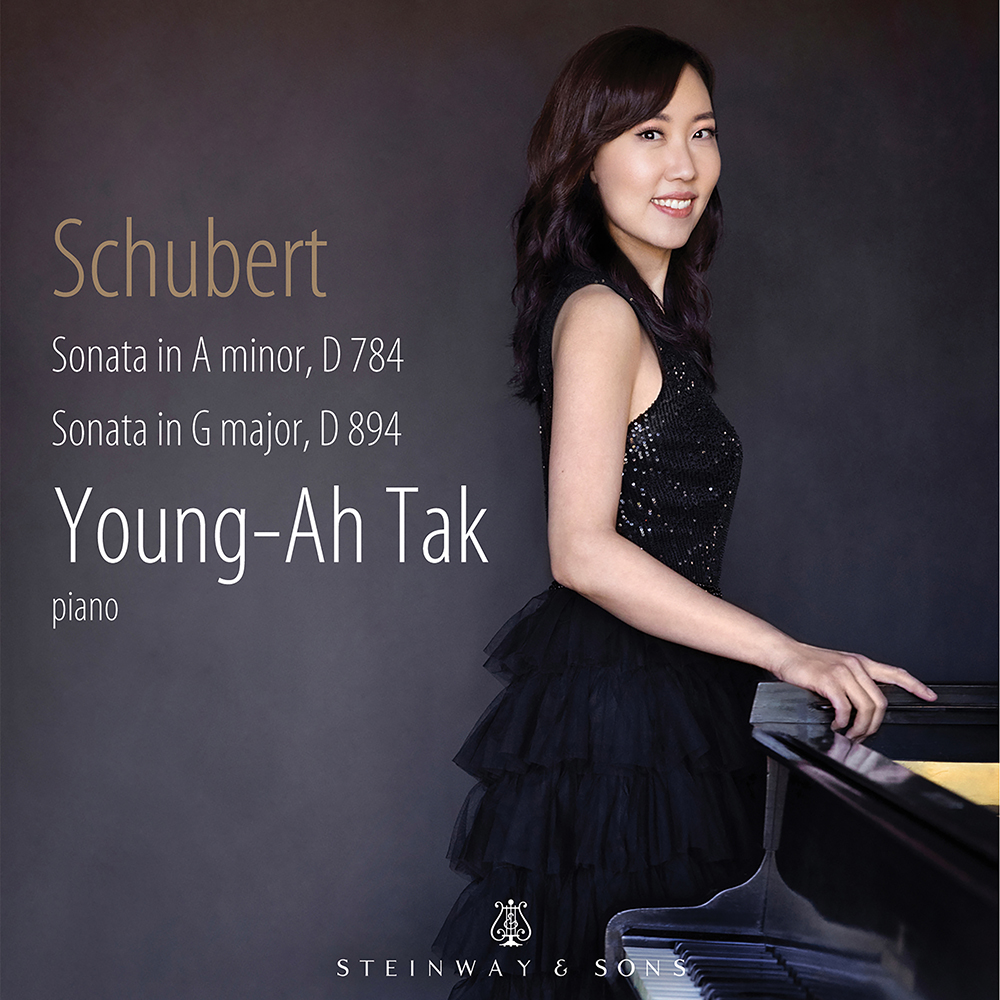Reviews
CD Review
Infodad
Published on January 23, 2025
 Original Link
Original Link
Young-Ah Tak: Schubert: Sonatas D 784 & D 894
Steinway & Sons
(++++) THE EXPRESSIVE PIANO
Schubert was born six years later than F.X. Mozart and died 16 years earlier, but he broadened and expanded the piano repertoire in ways far beyond anything that F.X. Mozart ever produced. His piano sonatas – many unfinished, Schubert’s habit being to leave a large number of works partly completed, possibly with the never-realized intention of returning to them later – have scale and emotional scope extending far beyond the poise and prettiness associated with salon music. Some of his sonatas, including the two played by Young-Ah Tak on a new Steinway & Sons CD, are significant contributions to the solo-piano genre and continue to challenge performers and delight audiences today. The three-movement No. 14 (D. 784) in A minor dates to 1823 but was not published until 1839, which was 11 years after Schubert’s death. Its first movement is unusually sparse in texture and has few of the modulations of which Schubert was generally fond. It is a bleak movement that leads to an Andante with a straightforward theme that is handled in some unusual ways – and then to a finale that seems to inhabit an altogether different world, being complex, virtuosic and thoroughly unsettling in mood. The difficulty for performers lies in integrating the three movements into a unified whole – something that Schubert himself did not really succeed in doing. Tak’s approach is to focus on the singing quality that all the movements share and to use the gently rocking sections of the finale as, in effect, auditory throwbacks to what has come before. She does not downplay the fireworks that dominate the finale, but she pays equal attention to the lyrical elements and thus maintains a sense of expressiveness throughout. This results in an interesting contrast with No. 18, D. 894, which dates to 1823 and was the last of Schubert’s piano sonatas published during his lifetime. It is a much larger work than D. 784, running 35 minutes to 19 for D. 784. And D. 894 is in four movements, not three. Instead of featuring varying moods that can be difficult to capture and contrast, D. 894 is mainly peaceful, with its relatively rare moments of darkness sounding more poignant than tragic. The challenge with this sonata is to retain its generally sunny mood without trivializing any of its gently contrasting feelings as they emerge in various guises and then ebb. This sonata is in G, and from the start of its opening movement – the longest in the piece – there is a sense that the mood will be Molto moderato e cantabile throughout, not just in the opening movement, which bears that designation. Indeed, everything in D. 894 is moderate: the second movement is Andante, the third Allegro moderato, and the fourth Allegretto. The subtle distinctions among the tempo indications require pianists to find ways both to connect the movements and to allow their individual characteristics to flow forth. Tak does a fine job with the music, keeping it moving at a reasonable pace while using its warm flow to carry the listener along gently through an aural landscape that is mostly pleasant and serene. These are well-considered performances that delve into Schubert’s expressiveness sure-handedly and with fine attention to the works’ emotional impact.

